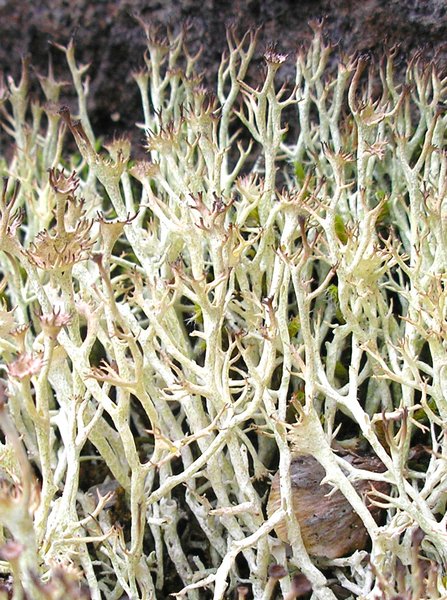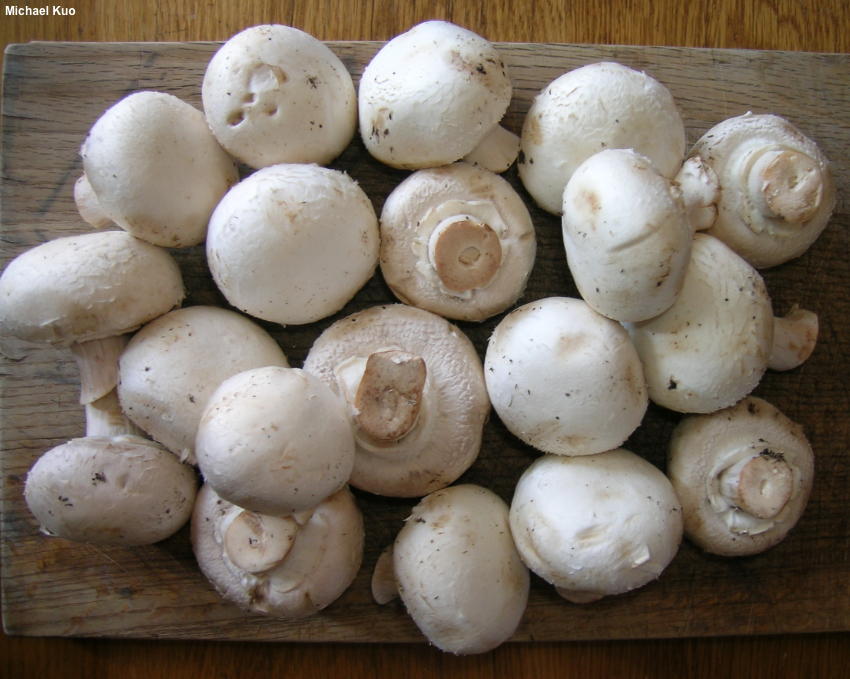
Found across the US, this lichen doesn't have a lot of papers publish unlike the others in this species, but hope to find some really cool facts about this in the future. The nickname for this lichen is known as the reindeer moss.
Fungi of the Day: Agaricus bisporus

This is one of the few edible mushrooms that we could get at the grocery store! Notes about this mushrooms and noted publications is that there are some beneficial compounds that have antioxidant and immunomodulating properties.
Drug of the Day: Venlafaxine

- Brand name: Effexor (XR formulation)
- Formulation: tablet, capsules
- Mechanism of Action: "believed to be associated with its potentiation of neurotransmitter activity in the CNS. Preclinical studies have shown that venlafaxine and its active metabolite, O-desmethylvenlafaxine (ODV), are potent inhibitors of neuronal serotonin and norepinephrine reuptake and weak inhibitors of dopamine reuptake. Venlafaxine and ODV have no significant affinity for muscarinic, histaminergic, or α-1 adrenergic receptors in vitro. Pharmacologic activity at these receptors is hypothesized to be associated with the various anticholinergic, sedative, and cardiovascular effects seen with other psychotropic drugs. Venlafaxine and ODV do not possess monoamine oxidase (MAO) inhibitory activity." (1.)
- Uses: Antidepressant, Major depressive disorder
- Dosages: " The recommended starting dose for Effexor is 75 mg/day, administered in two or three divided doses, taken with food. Depending on tolerability and the need for further clinical effect, the dose may be increased to 150 mg/day. If needed, the dose should be further increased up to 225 mg/day. When increasing the dose, increments of up to 75 mg/day should be made at intervals of no less than 4 days. In outpatient settings there was no evidence of usefulness of doses greater than 225 mg/day for moderately depressed patients, but more severely depressed inpatients responded to a mean dose of 350 mg/day. Certain patients, including more severely depressed patients, may therefore respond more to higher doses, up to a maximum of 375 mg/day, generally in three divided doses " (1)
- Side effects: Serotonin syndrome, sustained hypertension, Mydriasis
- Contraindications: hypersensitivity, concomitant use with MAOi (have a 14 day washout period before starting Effexor and wait 7 days after last Effexor dose before starting MAOi)
- Drug interactions: Alcohol, Cimetidine, Diazepam, Haloperidol, Lithium, Highly plasma protein bound drugs, Drugs interfering with hemostasis, CYP2D6 inhibitors, CYP3A4 inhibitors, Imipramine, Metoprolol, Risperidone, Indinavir, CNS active drugs, Serotonergic drugs, Triptans
Trial of the Day: Prism Trial (A Randomized Trial of Progesterone in Women with Bleeding in Early Pregnancy)(2.)
- Type of trial: multicenter, randomized, double-blind, placebo-controlled trial
- Treatment: 400 mg of progesterone or placebo twice daily
- Outcomes: birth of a live-born baby after at least 34 weeks of gestation
- Study size: 4153 women
- Location: United Kingdom
- Conclusion: did not see significant higher incidence of birth than placebo
Word of the Day: JOMO: noun (slang): a feeling of contentment with one’s own pursuits and activities, without worrying over the possibility of missing out on what others may be doing. (5.)
Resources
1. Venlafaxine package insert: https://www.accessdata.fda.gov/drugsatfda_docs/label/2008/020151s051lbl.pdf
2. PRISM trial: https://www.nejm.org/doi/full/10.1056/NEJMoa1813730?query=featured_home
3. Agaricus bisporus metabolite: https://www.ncbi.nlm.nih.gov/pubmed/29119493
4. Cladonia amaurocraea: http://lichenportal.org/portal/taxa/index.php?taxon=53366
5. JOMO. https://www.dictionary.com/e/word-of-the-day





